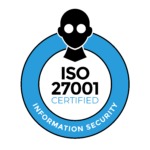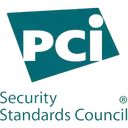NIST 800-53 is one of the most comprehensive cybersecurity frameworks developed by the National Institute of Standards and Technology (NIST). It provides organizations with detailed security and privacy controls designed to protect federal information systems and organizational data against evolving cyber threats.
The framework serves as a critical response to increasingly sophisticated cyberattacks targeting government agencies, contractors, and organizations handling federal information. With data breaches becoming more costly and frequent, NIST 800-53 helps organizations establish robust cybersecurity postures while meeting federal regulatory requirements. The standard is particularly relevant for organizations operating in today’s digital landscape, where sensitive data protection has become essential to business continuity and national security.
NIST 800-53 applies primarily to federal agencies and their contractors, organizations seeking Federal Risk and Authorization Management Program (FedRAMP) authorization, and any entity handling federal information or operating federal information systems. However, many private sector organizations also adopt this framework voluntarily as a best practice for comprehensive cybersecurity governance.
What it is
NIST 800-53 originates from the National Institute of Standards and Technology, a federal agency under the U.S. Department of Commerce. First published in 2005 and most recently updated in Revision 5 (2020), this special publication emerged from Federal Information Security Management Act (FISMA) requirements, which mandated federal agencies to implement comprehensive information security programs.
The framework’s key purpose centers on providing a comprehensive catalog of security and privacy controls that you can implement to protect your information systems and data. The scope encompasses not just technical safeguards, but also operational and management controls that address the full spectrum of cybersecurity risks. NIST 800-53 takes a risk-based approach, allowing you to tailor your security implementations based on your specific threat landscape, business requirements, and risk tolerance levels.
Core requirements and principles
The framework establishes several fundamental principles that guide its implementation:
Risk-based security forms the foundation, requiring you to conduct thorough risk assessments and implement controls proportionate to identified threats and vulnerabilities. This approach ensures you allocate resources effectively to address the most significant risks.
Defense in depth mandates multiple layers of security controls working together to protect information systems. No single control provides complete protection—instead, overlapping safeguards create comprehensive security coverage.
Continuous monitoring requires ongoing assessment and monitoring of security controls to ensure they remain effective over time. This principle recognizes that cybersecurity is not a one-time implementation but an ongoing process of vigilance and improvement.
System categorization demands that you classify your information systems based on the potential impact of a security breach on confidentiality, integrity, and availability. This categorization drives the selection of appropriate security controls.
Control tailoring allows you to modify baseline security controls to meet your specific operational requirements while maintaining adequate security posture.
Security authorization requires formal approval of information systems before they can operate, ensuring that appropriate security measures are in place and that residual risks are acceptable.
Types and categories
NIST 800-53 organizes security controls into three distinct impact levels that determine the stringency of required security measures:
Low impact systems handle information where loss of confidentiality, integrity, or availability would result in limited adverse effects on organizational operations, assets, or individuals. These systems require implementation of baseline security controls focused on fundamental protection measures.
Moderate impact systems involve information where compromise could cause serious adverse effects. These systems require additional security controls beyond the low baseline, including enhanced monitoring, access controls, and incident response capabilities.
High impact systems protect information where loss could result in severe or catastrophic adverse effects. These systems demand the most comprehensive security control implementation, including advanced threat protection, extensive monitoring, and sophisticated access management.
The framework also categorizes controls into 20 control families, including Access Control, Audit and Accountability, Configuration Management, Contingency Planning, Incident Response, Risk Assessment, and System and Communications Protection, among others.
Compliance process
Achieving NIST 800-53 compliance follows a structured, multi-phase approach:
System categorization and selection (1-2 months) begins the process, where you identify and categorize your information systems based on impact levels and select appropriate baseline security controls.
Implementation planning (2-4 months) involves developing detailed implementation plans, assigning responsibilities, and establishing timelines for control deployment. You must also conduct gap analyses to understand current security postures versus required controls.
Security control implementation (3-8 months) represents the most resource-intensive phase, where you deploy technical, operational, and management controls according to your implementation plans. This includes configuring security tools, developing policies and procedures, and training personnel.
Security control assessment (2-4 months) requires independent evaluation of implemented controls to verify effectiveness and proper operation. You must document control implementations and gather evidence for assessor review.
Authorization to operate (1-2 months) culminates the process, where authorizing officials review assessment results and make risk-based decisions about system operation approval.
Continuous monitoring represents an ongoing phase where you monitor control effectiveness, conduct regular assessments, and maintain security authorization through periodic reviews.
Key roles include System Owners responsible for overall system security, Information System Security Officers managing day-to-day security operations, Control Assessors evaluating control effectiveness, and Authorizing Officials making final authorization decisions.
Common challenges
You’ll frequently encounter several obstacles during NIST 800-53 implementation:
Resource constraints represent the most common challenge, as compliance requires significant investments in personnel, technology, and time. Many organizations underestimate the scope of effort required, leading to project delays and budget overruns.
Technical complexity emerges from the framework’s comprehensive nature, with over 400 security controls requiring deep technical understanding for proper implementation. Organizations often struggle with control interpretation and technical configuration requirements.
Documentation burden overwhelms many organizations, as NIST 800-53 requires extensive documentation of policies, procedures, security plans, and assessment evidence. Maintaining current and accurate documentation while managing day-to-day operations proves challenging.
Skills gaps limit implementation effectiveness when you lack personnel with sufficient cybersecurity expertise to properly implement and manage complex security controls.
Legacy system integration complicates compliance when you must implement modern security controls on older systems that may not support required capabilities.
Continuous compliance maintenance presents ongoing challenges as you must maintain control effectiveness over time while adapting to evolving threats and changing business requirements.
These challenges occur primarily due to the framework’s comprehensive scope, technical complexity, and the significant cultural and operational changes required for effective implementation.
Benefits of compliance
NIST 800-53 compliance delivers substantial value across multiple dimensions:
Enhanced security posture provides the most immediate benefit, as comprehensive control implementation significantly reduces cybersecurity risks and improves your ability to prevent, detect, and respond to security incidents.
Regulatory compliance enables you to meet federal requirements, qualify for government contracts, and achieve authorizations like FedRAMP that open new business opportunities.
Risk management improvement results from the framework’s structured approach to identifying, assessing, and mitigating cybersecurity risks, leading to better-informed business decisions and reduced potential for costly security incidents.
Operational efficiency emerges as standardized security processes and procedures streamline operations, reduce security-related disruptions, and enable more predictable security management.
Stakeholder confidence increases as customers, partners, and regulators gain assurance that you maintain robust cybersecurity practices, potentially leading to competitive advantages and stronger business relationships.
Cost savings accrue over time through reduced security incidents, more efficient security operations, and potential insurance premium reductions due to improved security postures.
Business continuity improves as comprehensive security controls reduce the likelihood of disruptive security incidents and enhance organizational resilience.

Related Posts
Stay connected
Subscribe to receive new blog articles and updates from Thoropass in your inbox.
Want to join our team?
Help Thoropass ensure that compliance never gets in the way of innovation.












.png)